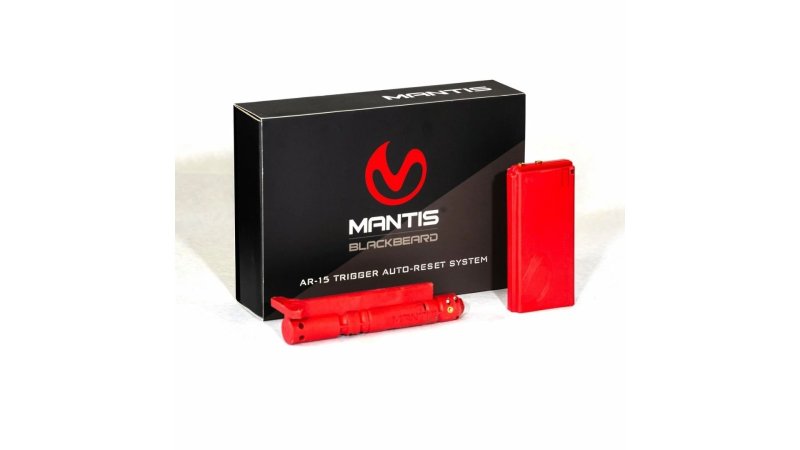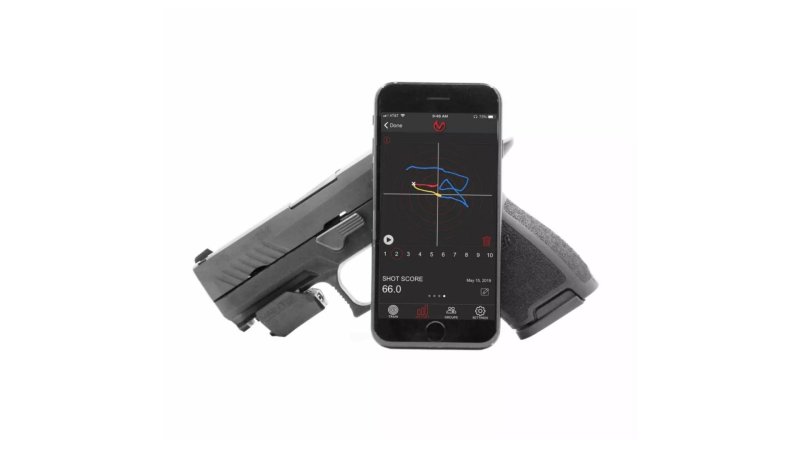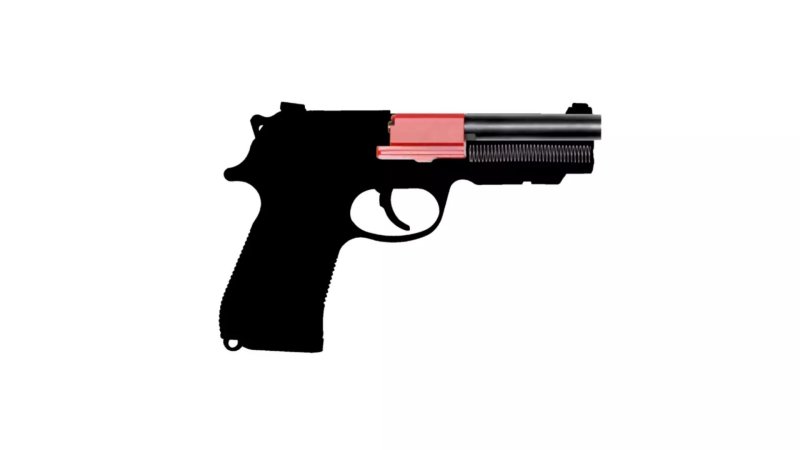

We may earn revenue from the products available on this page and participate in affiliate programs.
In recent years, the cost of ammo has shot way up, but people still need to practice and sharpen their marksmanship skills. The days of sitting in the scorching sun during Grass Week, snapping in on a barrel and manually cycling your rifle are over. With technologically advanced dry fire training systems, the future is now.
The best dry fire systems inject realism into your training, whether it’s through the use of computer software, haptic feedback, or lasers to help you train to get your weapon on target every time. They ensure that you get meaningful training in the comfort of your home.
For this article, the Task & Purpose team tried every training tool on this list and more to see how well they improved our shooting skills.
- Best Overall: Mantis Blackbeard
- Best Value: Mantis X3
- Editor’s Choice: CoolFire Trainer
How we tested
Dry fire practice is something that I’ve been meaning to do more of in 2023, so I picked this assignment as a way to not only force myself to get better about practicing but to also have meaningful data to improve my training. Testing this, I used my Daniel Defense DDM4V7 PDW and my Beretta M9A3. Additionally, I relied on the supplemental experiences from some of my other colleagues to ensure that my experiences weren’t outliers when it came to what worked and what didn’t. Overall, this list is the result of combing through the available options on the market, cutting through gimmicks, and providing you with the training solution that fits your needs.
Best Overall
Mantis Blackbeard
Pros
- Totally safe
- Universal fit for ARs
- Allows you to keep your trigger pull
Cons
- No recoil
- Does not track things like weapon and trigger control
- App is temperamental
Product Specs
- Firearm compatibility: Most AR-15 platform rifles
- Force feedback: None
- Laser: Red, Green, IR, or none
- Reset: Electronic
Best Value
Mantis X3
Pros
- Provides actual training feedback
- Compact
- Can be used for dry and live fire
Cons
- Does not provide any force feedback
- Needs rails or adapters to work
- Requires re-racking the slide
Product Specs
- Firearm compatibility: Any weapon with a Picatinny rail or adapter
- Force feedback: None
- Laser: N/A
- Reset: N/A
Editor’s Choice
CoolFire Trainer
Pros
- Keeps weight and trigger pull realistic
- Real force feedback
- Laser attachments available
Cons
- Expensive
- Runs out of gas easily
- No training feedback
Product Specs
- Firearm compatibility: Most popular duty or competition handguns
- Force feedback: CO2 gas blowback
- Laser: Optional for added cost
- Reset: CO2 gas blowback
Our verdict on dry fire training systems
Dry fire training sounds boring, but it doesn’t have to be. It’s an entire ecosystem of products that allows you to get as close as you can to the real thing, without actually having to spend the money and time getting to a range and firing live rounds.
The Mantis Blackbeard is a great option for nearly anyone who shoots an AR platform rifle, since it drops into almost any rifle, and turns it into a laser training tool.
The Mantis X3 actively coaches you through your training, supplementing a live coach and working in conjunction with the other options on this list, either as a standalone tool or a supplement.
The CoolFire Trainer gives most popular pistols realistic functionality, as long as you can overcome the inherent issues with using compressed gas.
No matter what your platform of choice, dry fire practice is essential, and these systems will help make you a better shot.
What to consider when buying dry fire training systems
No matter what your dry fire needs, there are specific features and considerations that will affect which system you choose, depending on the type of training that you need, your choice of weapon, and your desired functions.
Types of dry fire training systems
Motion sensors
Motion sensors are accelerometers that attach to your weapon and detect things like weapon sway, trigger pull, hand shaking, and other factors that would throw off your shots. These systems take these factors and use them to grade things like your grip, how far you’re pulling the weapon in any particular direction when you pull the trigger, and so forth.
Laser inserts
Laser inserts are devices that plug the barrel of a weapon, and briefly flash a laser down the barrel when the trigger is pulled to simulate the point of impact of a fired round. These systems can take the form of barrel or bolt swaps, or laser bullets that trigger the laser when the “primer” of the bullet is struck by the firing pin.
Trigger reset systems
Trigger reset systems allow you to get a natural trigger pull without having to manually reset the hammer of the weapon, which is essential for single-action or striker-fired pistols, and most rifles. These work by some mechanism re-cocking the trigger as soon as the shooter pulls it, allowing uninterrupted trigger pulls.
Dry fire weapons
Dry fire weapons are entire simulated weapon systems that replicate the function of real firearms, and often include a laser as well. A good example of these are the SIRT weapons, which didn’t make our list because of how specialized they are. However, for those who want a separate weapon system for total safety for professional training, these are a fantastic option.
Key features of a dry fire training system
Firearm compatibility
The firearm compatibility of a dry fire system is an important factor for choosing something that works for what you have. Certain systems like the Mantis X3 work with nearly any firearm, whereas the Blackbeard works with an entire category of firearm. Some, like the CoolFire, need to be selected for the specific weapon you have, due to the nature of how the system works.
Force feedback
Certain dry fire systems introduce an element of force feedback to simulate recoil, allowing you to better prepare for having to readjust your grip in between shots, manage your sight picture, and other factors. This is often achieved using an electric motor or gas blowback.
Laser
Many dry fire systems project a laser to give the shooter a visual aid to know where their point of impact would be. When properly zeroed, this can be used to illustrate concepts like the difference between point of aim and point of impact at certain distances, height over bore, and snap-shooting.
Trigger reset
Trigger reset systems re-cock the hammer automatically in between shots to allow for effective semi-auto shooting practice. This is often tied together with force feedback systems, especially on handguns, since their triggers are reset by slide action.
Pricing of a dry fire training system
Dry fire training systems are complex, so the budget end of them is $100 to $200, where you’ll find basic laser projectors and accelerometers that don’t allow for live fire. From $200 to $300, you’ll find accelerometers that allow for live fire, trigger reset systems like the Blackbeard, and the beginnings of force feedback systems. From $300 and up, you have advanced accelerometers, force feedback systems like the CoolFire, and training weapons like the SIRT rifles and pistols. Theoretically, the combined prices of an advanced motion tracker and a trigger reset system like those from Mantis, while full-featured, could cost over $500.
FAQs about dry fire training systems
You’ve got questions. Task and Purpose has answers!
Q: Is it difficult to learn how to use laser dry fire training systems?
A: There can be a learning curve with some systems, namely setting up the software or zeroing the laser on laser dry fire training systems like the Mantis Blackbeard, but most of these systems include clear and concise information on how to set it up.
Q: What about recoil and loading a magazine?
A: Using a system with force feedback like the CoolFire helps simulate recoil, and systems like the Blackbeard have their power stored in a magazine-shaped battery. The CoolFire doesn’t impede magazine loading, so you can still practice magazine changes that way. For ultimate function, a system like a SIRT laser training pistol is best.
Q: Where should I place the target?
A: Depending on your drill, place a target at a realistic engagement distance. The FBI minimum is 21 feet, but factors like being indoors vs outdoors, size of the target, and the system you’re using can affect that.
Q: How does laser dry fire training systems help with concealed carry licensing?
A: Certain states have training requirements to qualify for a concealed carry license or permit, and while these tests are not overly onerous in terms of the requirements for accuracy, novice shooters may find a dry fire system helpful to familiarize themselves with their weapon before they go to qualify for their license. In addition, training both dry and live fire is essential to maintain an adequate level of proficiency to reliably ensure that you could defend yourself from an attacker.
Q: What kind of lasers do laser dry fire training systems use?
A: Dry fire training systems almost exclusively use Class A lasers, either red, green, or infrared. This is for safety purposes, given that Class A lasers pose minimal risk to the human eye, and they don’t consume much battery power or produce much heat. The different colors are personal preference mostly, but infrared lasers can help shooters not rely on the flash of a laser impact to aim their weapon while still allowing the camera on their phone to pick up the light for scoring purposes on an app like Mantis Laser Academy.
Q: How many shots can be fired using the laser dry fire training system?
A: It depends on the system. Most are only limited by battery life and your trigger finger cramping, but systems like the CoolFire have a limited store of compressed CO2 and need to be replenished in between strings of fire.
Q: Can I use my laser dry fire training system to train for multiple firearms?
A: It depends on the system. For things like the Mantis X3, it can fit on any firearm with a Picatinny rail, and the software can be programmed for multiple configurations. For the CoolFire, it needs to be purchased for the exact handgun that you plan on shooting with.


